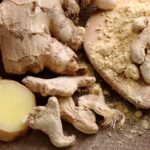With growing demand for healthier bakery products, soy fortified biscuits offer a promising solution to combat protein-energy malnutrition (PEM), particularly in children. K. B. Kamaliya and Rema S explore the development, nutritional benefits, and market potential of soy fortified biscuits as an innovative approach to improving child nutrition.
With rising demand for healthier bakery products, soy fortified biscuits present a promising solution to combat protein-energy malnutrition (PEM), especially among children. By incorporating defatted soy flour (DSF), these biscuits significantly enhance protein and essential nutrient content while remaining cost-effective. This study explores the development, nutritional benefits, and market potential of soy fortified biscuits, offering an innovative approach to improving child nutrition. For more on nutrient-rich food solutions, see Soy Fortified Biscuits: A Nutrient-Rich Solution for Protein Deficiency.
The evolving socio-economic landscape has led to an increased demand for processed foods, including bakery products. Health-conscious bakery items are gaining popularity alongside innovative new offerings, as highlighted in India’s Bakery and Confectionery Industry. One of the major nutritional challenges, particularly in developing countries like India, is protein-energy malnutrition (PEM), which primarily affects children.
Defatted soy flour (DSF), with approximately 50% protein and a well-balanced amino acid profile, has been widely recommended as an effective ingredient to enhance both the quantity and quality of dietary protein. Given the increasing trend of Indian mothers offering biscuits to young children as a weaning food, there is a strong need to improve the nutritional profile of commercial biscuits. Most commercially available biscuits have low protein content, which can be significantly enhanced by replacing refined wheat flour (RWF) with DSF. This aligns with findings from Top 10 Biscuit Brands in India from Parle-G to Oreo regarding popular biscuit choices.
This study aimed to develop soy fortified biscuits using defatted soy flour (DSF)to enhance their protein content and assess their impact on children’s growth. For more on food product development, see Food Extrusion for New Product Development.
Ingredient Selection and Biscuit Development
High-quality raw ingredients were sourced from local markets in Vallabh Vidyanagar and Anand, with DSF procured from Sakthi Sugars Ltd. (Soy Division), Coimbatore. Market research identified two widely preferred biscuit types—vanilla and glucose biscuits—which were selected for formulation and laboratory preparation. The importance of quality ingredients is further discussed in What All One Needs to Bake a Good Quality Bread.
A control biscuit (CB) recipe was standardized by testing various fat sources and sugar levels, adjusting minor ingredients, and optimizing processing conditions. Each formulation was evaluated for sensory characteristics using a 9-point hedonic scale to determine consumer acceptability. For more on food processing standards, see Good Manufacturing Practices in Food Industry.
DSF was incorporated into the control biscuit formula by replacing RWF in increments from 5% to 45%. The formulations were assessed through sensory evaluation, and ultimately, biscuits with 25%, 30%, and 35% DSF replacement were selected for final testing. Sensory acceptability was determined using a composite scoring test prescribed by CFTRI, Mysore, with evaluations conducted both on the next day and four days post-preparation to determine the optimized formula. This process mirrors quality assurance approaches discussed in Quality Assurance in Food Industry.
Nutritional and Physical Analysis of Soy Fortified Biscuits
Nutritional analysis of both control and soy fortified biscuits was conducted using standard methods. The production cost of the experimental biscuits was calculated based on prevailing market prices and compared to the control biscuit.
Physical properties such as biscuit weight, diameter (D), thickness (T), and spread ratio were measured. The three-point break technique (Gaines, 1991) was used to assess biscuit hardness. Results indicated that incorporating DSF led to a reduction in diameter, an increase in thickness, and a lower spread ratio, likely due to the higher water retention capacity of DSF. The weight and hardness of the biscuits also increased as DSF levels rose. These findings contribute to the growing field of Functional Foods and Phyto-Medicines from Spices.
For more on innovative food solutions addressing malnutrition, see A Partnership to Combat Vitamin A Deficiency in Africa.

Sensory Evaluation and Selection
Sensory evaluation was conducted on day 1 and day 4 post-preparation. The final optimized formula (in baker’s percentage) was:
- Refined Wheat Flour (RWF): 100%
- Margarine: 25%
- Cottonseed Oil: 25%
- Sugar: 40%
- Liquid Glucose: 2%
- Vanilla Essence: 0.25%
- Salt: 1%
- Ammonium Bicarbonate: 0.5%
- Distilled Water: 10%
Biscuits formulated with up to 30% DSF received a sensory rating of “neither like nor dislike” compared to the control. However, the 25% DSF biscuit achieved the highest sensory score, closely followed by the 30% DSF biscuit. Sensory scores showed a slight decline when biscuits were assessed on day 4.
Nutritional Benefits
Compared to commercial biscuits, soy fortified biscuits showed a 127.85% increase in protein content. A serving of seven biscuits (with 30% DSF) met one-third of the Recommended Dietary Allowance (RDA) for preschool children. Additionally, the fiber content doubled, aiding digestion. Other essential nutrients also increased significantly:
- Calcium: From 4.10 mg to 66.20 mg per 100g
- Phosphorus: From 30.19 mg to 198.07 mg per 100g
- Iron: From 0.25 mg to 2.82 mg per 100g
These improvements make the soy fortified biscuit a valuable dietary option for children, supporting bone and blood development.
Cost Analysis and Market Potential
The only variation in ingredients between the control and experimental biscuits was the replacement of RWF with DSF. The cost of soy fortified biscuits was Rs. 4 higher per kg than control biscuits due to DSF’s higher cost. However, bulk purchasing could help offset this difference. Furthermore, positioning the biscuit as a therapeutic, high-protein product could justify a premium price.
For comparison, commercially available high-protein biscuits such as ‘Threptin’ (30% protein) are priced at Rs. 500/kg, whereas the experimental biscuit costs only Rs. 60/kg, supplying about half the protein content of Threptin. This highlights a strong market potential for an affordable, high-protein biscuit aimed at improving child nutrition.
Conclusion
The study concludes that biscuits with 30% DSF are highly nutritious, cost-effective, and acceptable for children. Promoting soy fortified biscuits as a health food could not only boost the bakery industry but also contribute to combating protein-energy malnutrition. Expanding the use of defatted soy flour in various health-oriented bakery products presents a win-win opportunity for both consumers and the food industry.
Frequently Asked Questions (FAQs) about Soy Fortified Biscuits
What are soy fortified biscuits?
Soy fortified biscuits are bakery products enriched with defatted soy flour (DSF) to enhance their protein content and nutritional value, making them a healthier alternative to regular biscuits.
Why is defatted soy flour (DSF) used in biscuit production?
DSF contains approximately 50% protein with a well-balanced amino acid profile, making it an ideal ingredient to improve both the protein content and quality of bakery products, particularly for addressing protein-energy malnutrition (PEM) in children.
How does soy fortification benefit children’s nutrition?
Replacing refined wheat flour (RWF) with DSF significantly increases protein levels, along with calcium, phosphorus, iron, and fiber, all of which contribute to better growth, digestion, and bone development in children.
How much protein do soy fortified biscuits provide?
The protein content of soy fortified biscuits increased by 127.85% compared to regular biscuits. Consuming seven biscuits made with 30% DSF can meet one-third of the Recommended Dietary Allowance (RDA) for preschool children.
How does soy fortification affect the texture and appearance of biscuits?
Replacing RWF with DSF results in reduced diameter, increased thickness, and a lower spread ratio due to DSF’s higher water retention capacity. The biscuits also become slightly harder.
Are soy fortified biscuits cost-effective?
Although the cost of soy fortified biscuits is Rs. 4 higher per kg than regular biscuits due to the price of DSF, they remain highly affordable compared to commercial high-protein biscuits like Threptin, which costs Rs. 500/kg.
Can soy fortified biscuits be marketed as a health food?
Yes! Given their high protein, fiber, and essential nutrient content, soy fortified biscuits can be positioned as a cost-effective, nutritious alternative to combat malnutrition, benefiting both consumers and the bakery industry.
‘Processed Food Industry’: The Voice of Food Processing Industry
Processed Food Industry (PFI) is a premier English-language monthly B2B publication (ISSN 09721649) headquartered in New Delhi, catering to the vibrant and ever-evolving food processing industry. While we don’t claim to be the largest or most widely read, our proud legacy of over 27 years—publishing continuously since 1997—has earned us the trust of industry professionals as a reliable source of insights and information.
If your goal is to tap into the booming Indian and South Asian markets to promote your equipment, technology, software, or consumables, PFI is your strategic partner. With our hybrid approach across print, web, and social media, we help you establish strong brand recognition rooted in market relevance. Backed by a team of top-tier technical writers, we’re ready to work closely with you and your customers to craft compelling content that drives results.
India and South Asia’s food industry is expanding rapidly, driven by efficiency and cutting-edge innovations. Don’t miss the opportunity to elevate your brand and engage with this dynamic market. Get our 2025 media kit to fine-tune your marketing strategy, increase your visibility, and convert potential customers into valuable conversations. Additionally, ask for a sample copy of our monthly magazine and experience the quality and relevance we deliver.
Let us help you define your role in the future of the food processing industry.
Have a news or topic to share with industry? Write to us editorial@pfionline.com

















